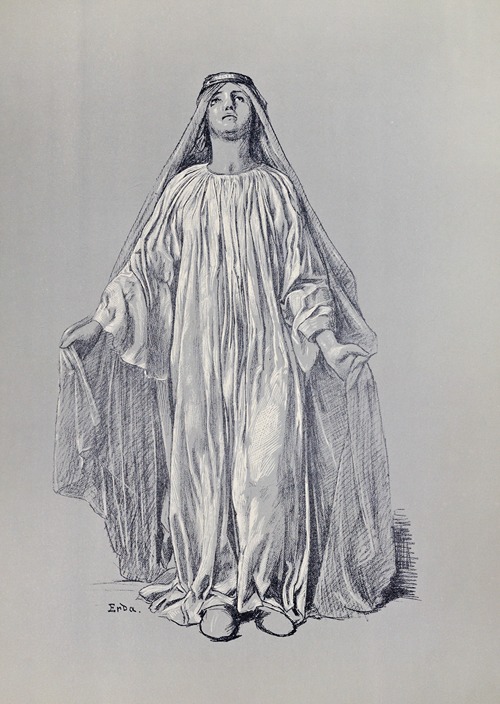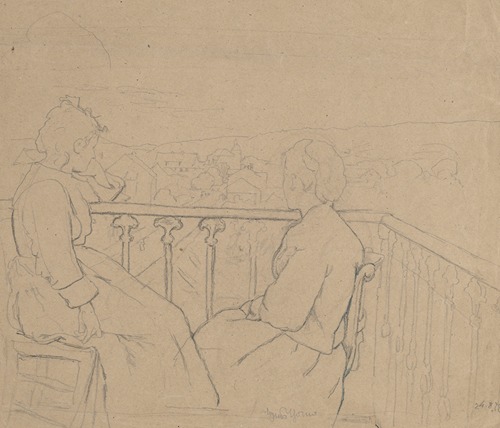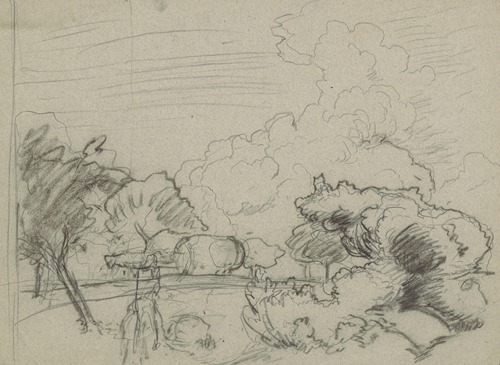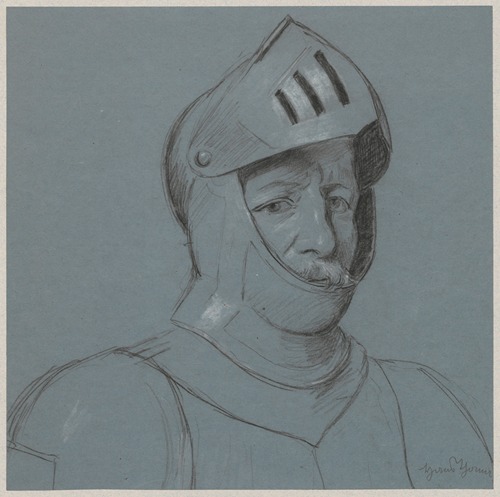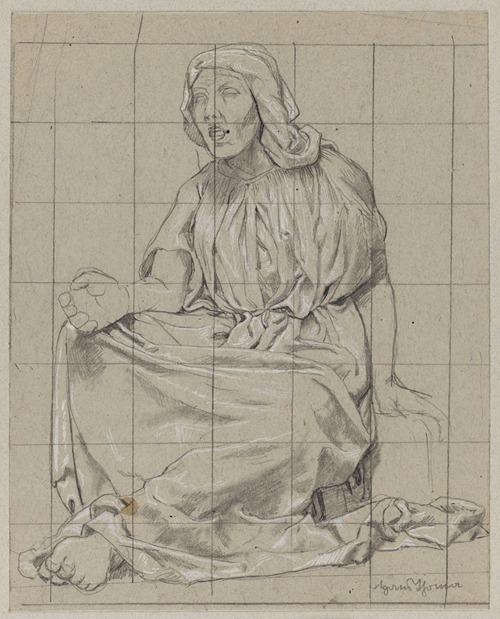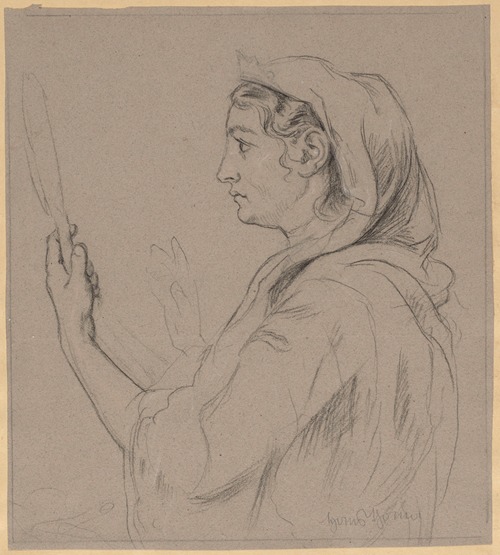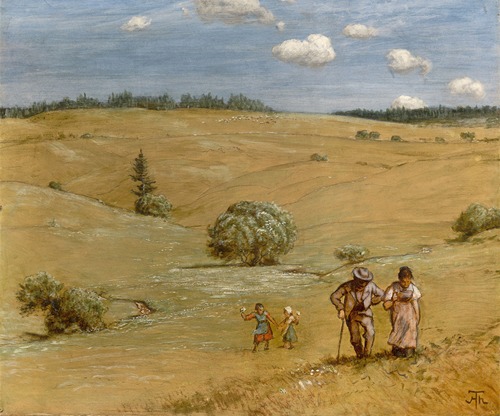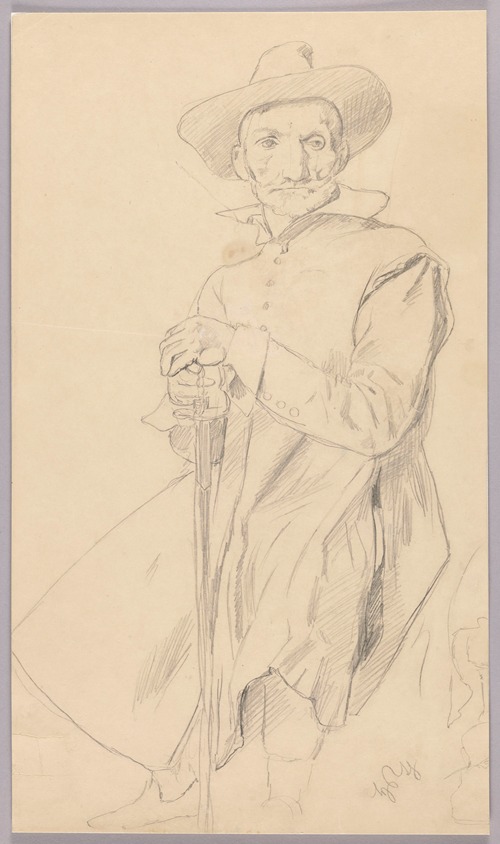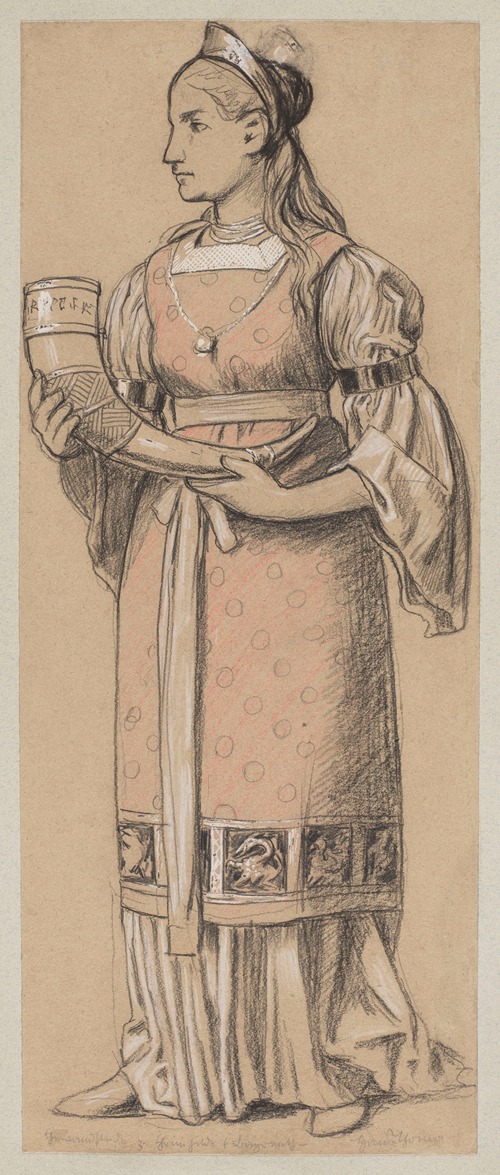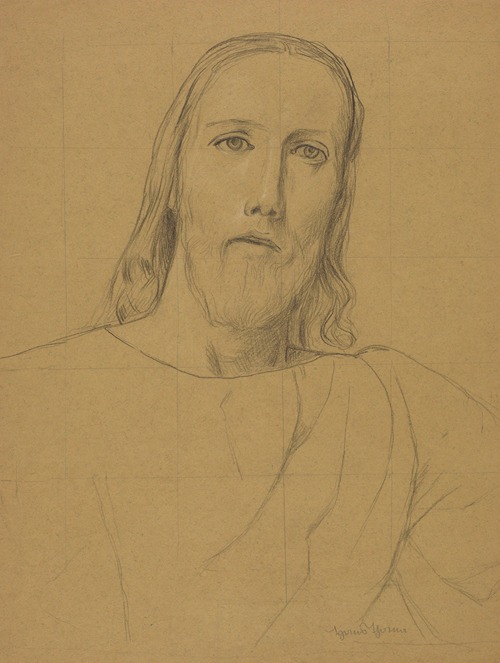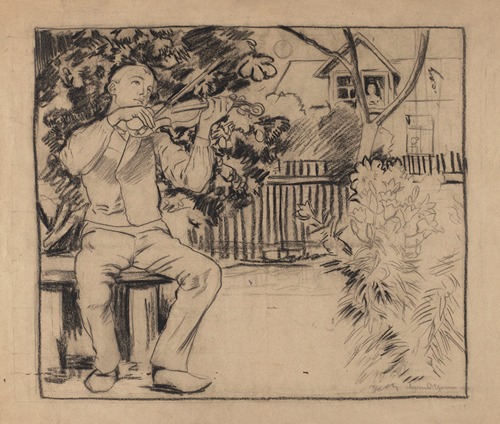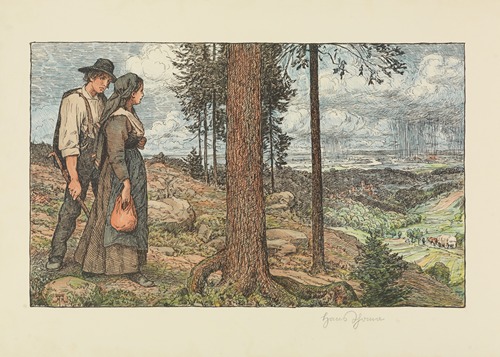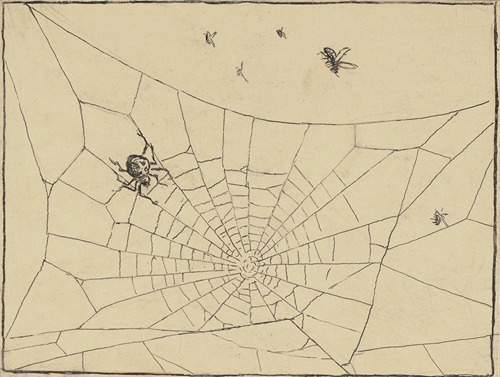
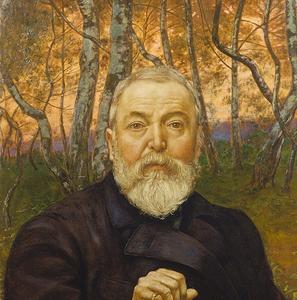
Hans Thoma was a German painter. He was born on 2 October 1839 in Bernau, Grand Duchy of Baden, in the Black Forest, Germany. He was the son of a miller and was trained in the basics of painting by a painter of clock faces. He entered the Karlsruhe Academy in 1859, where he studied under Johann Wilhelm Schirmer and Ludwig des Coudres – the latter of which had a major influence on his career.
Thoma also studied under Hans Gude, but rebelled against Gude's realism. He subsequently studied and worked, with but indifferent success, in Düsseldorf, Paris, Italy, Munich and Frankfurt, until his reputation became firmly established as the result of an exhibition of some thirty of his paintings in Munich. He died in Karlsruhe in 1924 at the age of 85.
In spite of his studies under various masters, his art has little in common with modern ideas, and is formed partly by his early impressions of the simple idyllic life of his native district, partly by his sympathy with the early German masters, particularly with Albrecht Altdorfer and Lucas Cranach the Elder. In his love of the details of nature, in his precise drawing of outline, and in his predilection for local coloring, he has distinct affinities with the Pre-Raphaelites.
